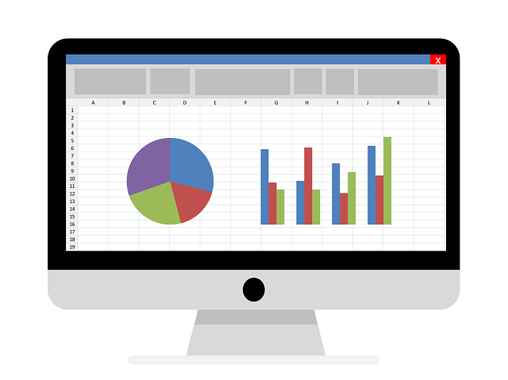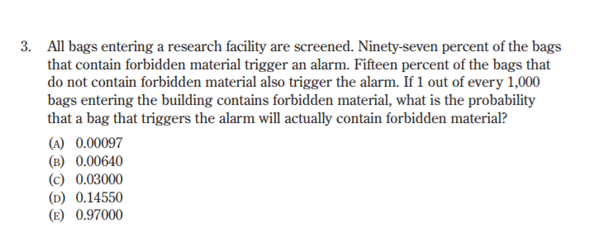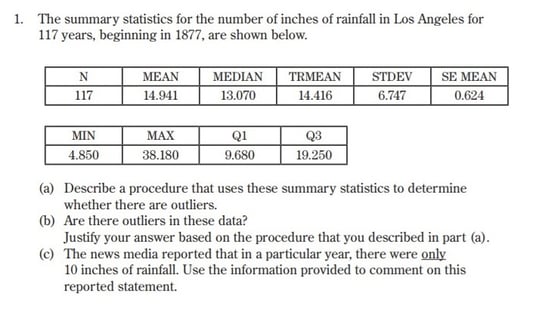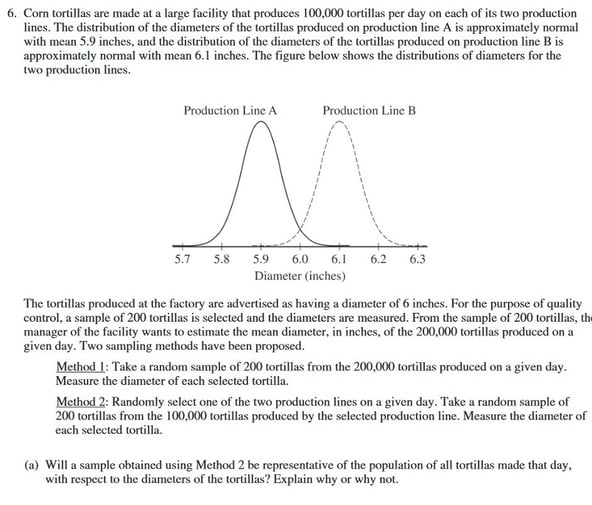Ap Statistics Textbook 6th Edition
Are you taking AP Statistics? If so, you're probable wondering what to expect from the AP Statistics exam. Earlier y'all sit down down to accept the terminal exam, it'due south important to understand how the AP Stats test is formatted, what topics it will cover, and how it'll be scored. This guide will explain all of that information, show you official sample problems and give y'all tips on the best way to prepare for the AP Statistics test. In 2022, the AP Statistics exam will take place on Thursday, May fifth at 12:00pm. How long is the AP Statistics examination? The test is a full of three hours long and contains two sections: multiple choice and free response. You're allowed a graphing calculator for the entire exam. The content of the AP Stats exam and grade is centered around nine units. Beneath are the 9 units, along with what pct of the examination will exist on them and all the topics that fall beneath each of them. Each unit of measurement starts with an "introducing statistics" question that'll be answered throughout the unit. The list beneath covers every single topic that the AP Statistics exam could test you on. Every bit we mentioned above, there are three types of questions on the AP Stats examination: multiple choice, short reply, and investigative job. Below are examples of each question type. You tin can see more sample questions and reply explanations in the AP Statistics Course Clarification. At that place are 40 multiple-choice questions on the examination. Each has five reply options. Some questions will exist accompanied past a chart or graph y'all need to analyze to answer the question. There are v short-answer questions on the AP Stats test. Each of these questions typically includes several dissimilar parts you lot need to reply. You're expected to spend about 12 minutes on each brusk-answer question. Looking for assist studying for your AP exam? Our one-on-one online AP tutoring services can assist you fix for your AP exams. Get matched with a top tutor who got a high score on the test you're studying for! The final question on the exam is the Investigative Task question. This is the nigh in-depth question on the examination, and you should spend near 30 minutes answering information technology. It volition have multiple parts you need to answer and crave multiple statistics skills. Y'all'll likewise need to provide a detailed explanation of your answers that shows the strength of your statistics skills. Be certain to show all your work as you'll be graded on the completeness of your answer. For the multiple-choice office of the examination, y'all earn one indicate for each question you answer correctly. In that location are no point deductions for incorrect answers or questions yous get out blank. Official AP graders will grade your gratuitous-response questions. Each of the six gratuitous-response questions is scored on a calibration of 0 to 4 points, so the total section is out of 24 points. The complimentary-response questions are graded holistically, which means, instead of getting a point or half a indicate for each bit of right information you include, graders expect at your respond to each question as a "complete parcel," and your course is awarded on the overall quality of your reply. The grading rubric for each gratuitous-response question is: What does holistic grading mean for you? Basically, you lot tin can't expect to earn many points by including a few correct equations or arithmetic answers if you're missing central statistical analysis. You need to show y'all sympathize how to use stats to become a good score on these questions. If y'all take a practise AP Stats examination (which you should!) you'll desire to become an estimate of what your score on information technology is so you tin go an thought of how well you'd do on the real examination. To estimate your score, you'll need to practice a few calculations. #1: Multiply the number of points you lot got on the multiple-choice department by 1.25 #two: For free-response questions 1 through 5, add the number of points you got together and multiply that sum by 1.875 (don't circular). If yous need help estimating your score, the official costless-response questions we linked to above include sample responses to assist you get an idea of the score you lot'd get for each question. #3: For free-response question #6, multiply your score by 3.125. #4: Add the scores you got in steps one-iii together to get your Composite Score. For example, say y'all got xxx questions correct on the multiple-choice section, 13 points on questions ane-5, and ii points on question half-dozen. Your score would exist (xxx x 1.25) + (13 ten one.875) + (ii x 3.125) = 68.125 which rounds to 68 points. Past looking at the chart below, y'all can see that'd get yous a 4 on the AP Statistics test. Below is a conversion nautical chart and then you can meet how raw score ranges translate into final AP scores. I've also included the percentage of students who earned each score in 2021 to give you an thought of what the score distribution looks like: Composite Score AP Score Per centum of Students Earning Each Score (2021) Source: The Higher Board Practise tests are an important part of your AP Stats prep. There are official and unofficial AP Stats practice tests available, although we e'er recommend official resources offset. Below are some of the all-time practise tests to utilize. Official Practice Tests To learn more most where to find AP Statistics practice tests and how to apply them, bank check out our complete guide to AP Statistics practice exams. In this section we go over iii of the most useful tips you tin can use when preparing for and taking the AP Statistics examination. Follow these and you're more probable to get a not bad score on the exam. As nosotros mentioned before, free-response questions on AP Stats are graded holistically, which means you'll get ane score for the entire question. This is different from many other AP exams where each correct component you include in a complimentary-response question gets y'all a certain number of points, and those points are then added up to go your total score for that question. The Stats free-response questions are graded holistically considering in that location are often multiple right answers in statistics depending on how you solve the problem and explain your reply. This means you can't just respond function of the question and look to get a practiced score, fifty-fifty if you've answered that function perfectly. If you've ignored a large part of the problem, your score will be low no matter what. And so instead of trying to become a signal here and there past including a right formula or solving one part of a question, make sure you're looking at the unabridged problem and answering it as completely as possible. Also, if you need to include an explanation, be sure it explains your thought process and the steps you took. If your caption shows you understand important stats concepts, it could assist you get a higher score even if your final respond isn't perfect. Aiming for the well-nigh complete response possible is also of import if you can't answer one part of a question that's needed to respond other parts. For instance, if y'all can't figure out what the answer to part A is, simply yous need to use that answer for parts B and C, just make up an answer (try to go along it logical), and use that answer to solve the other parts, or explain in detail how yous'd solve the problem if you knew what the reply to part A was. If you can show you know how to solve the latter problems correctly, you lot'll likely get some credit for showing you understand the stats concepts being tested. Y'all'll need a graphing reckoner to reply pretty much every question on the Stats test, so make certain yous know how to use it. Ideally, the calculator yous use on test twenty-four hours volition be the same one you've been doing homework and taking tests with throughout the school yr so you know exactly how to apply information technology. Knowing how to solve common stats functions on your calculator and translate the answers y'all get will save you a lot of time on the exam. Your calculator will likely be nearly useful on the multiple-choice section where you don't need to worry about showing work. Merely plug in the data you lot're given into your figurer, and run the right equations. Then you lot'll have your answer! You may think that since AP Stats is a math course, vocab won't be an important part of the exam, just you need to know quite a few terms to practise well on this exam. Disruptive right- and left-skewed or random sampling and random resource allotment, for instance, could lead to you losing tons of points on the exam. During the schoolhouse year, stay on tiptop of any new terms you lot learn in class. Making flashcards of the terms and quizzing yourself regularly is a great manner to stay up-to-engagement on vocab. Many AP Stats prep books besides include a glossary of important terms you tin can apply while studying. Earlier the AP Stats test, you lot should know all important terms like the back of your hand. Having a general idea isn't good enough. A large function of stats is being able to back up your answers, and to exercise this you lot'll oftentimes need to use stats vocab in your explanations. Just stating the term won't earn you nearly every bit many points as beingness able to explicate what the term is and how it supports your respond, then make sure you lot actually know your vocab well. The AP Statistics exam is three hours long and consists of 40 multiple-choice questions and six gratuitous-response questions. To prepare well for AP Stats exam questions, it's of import to take exercise exams and know how to class them and then you can estimate how well you'd practise on the bodily exam. When studying for the AP exam, recollect to reply the entire question for gratuitous response, know how to use your reckoner, and be on top of stats vocabulary. Experience the need to do some quick reviewing after looking through what'll be covered on the AP Stats examination? Accept a spin through our guide to statistical significance to refresh yourself on how to run a t-exam. How difficult is AP Stats compared to other AP classes? Go the answer by reading our guide to the hardest AP exams and classes. Wondering which other math classes y'all should take besides statistics? Math is often the trickiest discipline to choose classes for, but our guide will assist you figure out exactly which math classes to take for each year of high school. A prep volume tin be one of your best study resources for the AP Stats test. But which prep book should you choose? Cheque out our guide to AP Stats prep books to learn which is the all-time and which you should avoid. Thinking alee to college applications? If you're a freshman, sophomore, or junior worried about college admissions, our world-grade admissions counselors can assist. We know exactly what kinds of students colleges want to acknowledge and can make sure your profile shines. PrepScholar Admissions is the world's all-time admissions consulting service. We've helped thousands of students get into their top choice schools, from state colleges to the Ivy League. Join our mentoring program today: 
How Is the AP Statistics Exam Structured?
Multiple-Option Section
Free-Response Section
What Does the AP Statistics Test Test You On?
Unit ane: Exploring One-Variable Data (15-23% of exam)
Unit of measurement 2: Exploring Ii-Variable Data (5-vii% of examination)
Unit three: Collecting Data (12-15% of exam)
Unit 4: Probability, Random Variables, and Probability Distributions (10-20% of examination)
Unit 5: Sampling Distributions (7-12% of exam)
Unit 6: Inference for Categorical Data: Proportions (12-15% of test)
Unit 7: Inference for Quantitative Data: Means (10-18% of test)
Unit of measurement 8: Inference for Chiselled Data: Chi-Foursquare (2-5% of test)
Unit of measurement nine: Inference for Quantitative Data: Slopes (2-v% of exam)

AP Statistics Sample Questions
Multiple-Pick Sample Question

Brusk-Answer Sample Question


Investigative Task Sample Question


How Is the AP Statistics Exam Graded?
Estimating Your AP Statistics Score
70-100 5 xvi.0% 57-69 four 20.0% 44-56 three 22.0% 33-43 2 17.0% 0-32 i 25.0% Where Can You lot Find Practice AP Stats Tests?

3 Tips for the AP Statistics Exam
#1: For Costless Response, Answer the Entire Question
#2: Know How to Utilise Your Calculator
#3: Know Your Vocabulary
Summary: Statistics AP Exam
What's Next?



Most the Author
Christine graduated from Michigan Country University with degrees in Environmental Biology and Geography and received her Principal's from Knuckles University. In loftier school she scored in the 99th percentile on the SAT and was named a National Merit Finalist. She has taught English and biology in several countries.
Ap Statistics Textbook 6th Edition,
Source: https://blog.prepscholar.com/ap-statistics-exam
Posted by: babinforintolue.blogspot.com


0 Response to "Ap Statistics Textbook 6th Edition"
Post a Comment